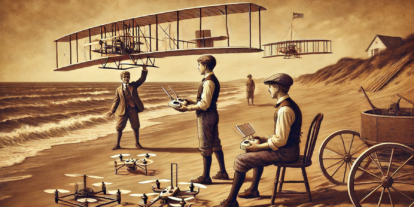With over $10 trillion spent globally each year on construction, it’s no surprise that construction and engineering firms were among the early adopters of drones. If you can save one missed measurement or avoid even one safety event, the cost of a drone program pays for itself within the first two months. The ROI is cut and dry.
But what’s less obvious is the growing number of ways drones are being used every day at construction sites around the world. In a highly variable environment like a construction site, reliability of workflows and tools is paramount. Drones provide consistent capabilities to survey, photograph and measure. The perils of relying on often out of date Google maps or other Internet sources should be a thing of the past. But they’re not just photographer robots. They’re force multipliers for major imperatives like safety, efficiency and maximizing uptime.
What follows is a list of some of the most common use cases we encounter at Kittyhawk:
Most Common Use Cases for Drones in Construction and Engineering
Surveying
UAS used to capture data points that will inform design and construction of new structures.
Safety
Lowers healthcare and insurance costs by using drones in areas that are high-risk for employees.
Inspections
UAS used for hard to reach areas resulting in less permits and less fees.
Estimations
UAS captures volumetric data to efficiently and more accurately gather info about existing infrastructures. Increases accuracy of bids and estimates.
Maintenance
Aerial and thermal imaging are used to assess building performance and detect leak and potential malfunctions.
Logistics
Aerial imaging for effective and efficient route planning. Optimizes workflows.
Marketing
Aerial imaging to incorporate into website and marketing materials.
If you’re new to drones in construction, here are some key terms from our glossary you’re going to want to understand:
Key Drone Terminology
Photogrammetry
Photogrammetry is the process of collecting overlapping still aerial images of land, land features and/or buildings to create a detailed and dimensionally accurate 3D or 2D aerial map.
LIDAR
LIDAR (light detection and ranging) is a form of airborne laser scanning, which can be used to generate similar outputs to those produced by photogrammetry. Its principal advantage is that level information can be gained from beneath vegetation cover and tree canopies.
Inspections
Use UAS for high-level inspections from perspectives that would otherwise be costly or dangerous to perform.
- Asset condition inspections
- Searching for defects and symptoms of distress or flaws
Aerial Photography and Video
Gimbaled image stabilization from unique aerial perspectives offers richer analysis capabilities.
- Progress reporting through photos/video
- Conceptual marketing and showcasing projects
Thermal Imaging
Gather near visible light spectrum to understand temperature and temperature differentials as symptoms of instability or maintenance requirements.
- Leak Detection (heating and cooling) for energy efficiency
- Assess thermal baselines of equipment time consuming, unsafe to access and compare trends over time or to similar components.
Whether you’re already flying a fleet or still in the hangar thinking about it, let us know how we at Kittyhawk can help your construction firm do drone operations the right way.
Chris Yates
Chris Yates heads Enterprise Sales for Kittyhawk.io in the AEC
(Architecture, Engineering and Construction) vertical. He draws on his experience as a licensed instrument rated Part 61 pilot, Part 107 operator and extensive experience with geospatial software to help departments and Enterprises evaluate and implement best practices within their sUAS programs.



